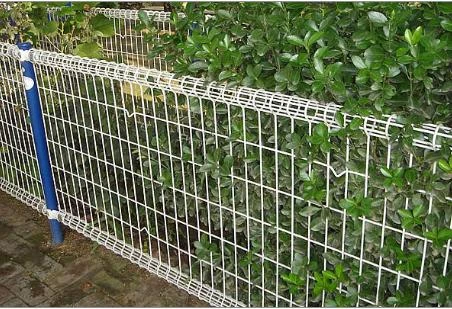 TEL:
+86-13102802206
TEL:
+86-13102802206
 Email:
fencenetting@china.com
Email:
fencenetting@china.com
 Language
Language
 TEL:
+86-13102802206
TEL:
+86-13102802206
 Email:
fencenetting@china.com
Email:
fencenetting@china.com
 Language
Language


The Importance of Temporary Fencing for Events
When planning an event, whether it's a concert, a festival, a sporting event, or even a corporate gathering, ensuring the security and organization of the venue is a top priority. One of the most effective and versatile solutions for managing space and protecting attendees is temporary fencing. Temporary fencing is not only a practical choice but also plays a crucial role in enhancing the overall experience of any event.
Security and Safety
One of the primary reasons event organizers opt for temporary fencing is to enhance safety and security. Temporary fences provide a physical barrier that helps control access to the event area. This is particularly important for large gatherings where crowd management is essential. By directing the flow of attendees, organizers can prevent overcrowding in certain areas and ensure that emergency exits remain accessible at all times.
Moreover, temporary fencing serves as a deterrent to unauthorized individuals who may wish to enter the venue without permission. Fencing can be equipped with gates that are manned by security personnel, further ensuring that only ticket-holding attendees gain access. This added layer of security allows organizers to focus on the event itself, confident that they have taken necessary precautions to protect their guests and staff.
Defining Boundaries
Temporary fencing is instrumental in defining the boundaries of an event space. This is especially important in outdoor environments where it may not be immediately clear where an event starts and ends. By setting up fencing, organizers can create a distinct area for activities, vendors, and stages, which not only aids in crowd control but also enhances the aesthetics of the venue.
The presence of fencing helps eliminate confusion among attendees, allowing them to navigate the event space with greater ease. This clear demarcation can also improve the overall layout and flow of the event, making it more enjoyable for everyone involved.
Versatility and Customization
Temporary fencing is highly versatile and can be customized to fit the specific needs of an event. Different types of fencing, such as chain link, mesh, or plastic barricades, can be utilized depending on the level of security required and the environmental conditions. This adaptability means that event organizers can choose a solution that best fits their budget and aesthetic preferences.

Moreover, many companies offer options for branding on temporary fencing. This presents a unique opportunity for event sponsors to increase their visibility. By incorporating logos and promotional materials on the fencing, sponsors can gain exposure while simultaneously contributing to the overall decor of the event.
Environmental Considerations
In recent years, there has been an increasing focus on sustainability within the events industry. Temporary fencing can also play a role in reducing environmental impact. Many rental companies now offer eco-friendly fencing options made from recycled materials. Additionally, since temporary fencing is reusable, it helps minimize waste compared to permanent structures that require extensive resources for installation and removal.
Organizers can also consider using fencing to create designated waste disposal areas, helping to promote a clean and environmentally conscious event. By incorporating sustainable practices into event planning, organizers can appeal to eco-minded attendees and enhance their reputation.
Cost-Effectiveness
Renting temporary fencing can be a cost-effective solution compared to investing in permanent structures. The rental process typically includes transportation, setup, and removal, reducing the overhead costs associated with purchasing and maintaining fencing materials. This budget-friendly option allows event organizers to allocate more resources towards other essential aspects of the event, such as entertainment, catering, or marketing.
Furthermore, many temporary fencing companies offer flexible rental durations, allowing organizers to rent fencing for as long as needed without incurring unnecessary costs. This flexibility can be particularly beneficial for multi-day events or festivals.
Conclusion
In summary, temporary fencing is an essential element of successful event management. It provides safety, defines boundaries, offers versatility, and promotes sustainability—ultimately enhancing the experience for attendees. As events continue to grow in size and scope, the importance of effective crowd management solutions, such as temporary fencing, cannot be overstated. By investing in this practical tool, event organizers can ensure a secure and enjoyable environment for everyone involved.